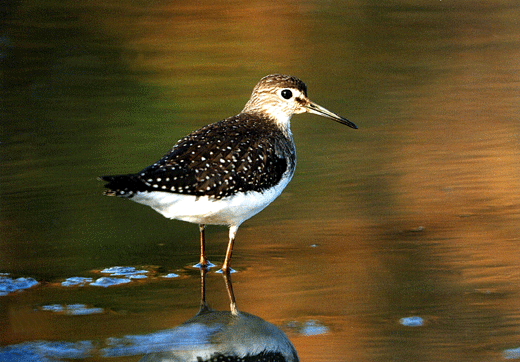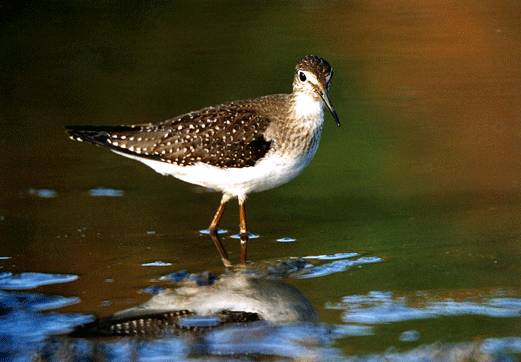Solitary Sandpiper Tringa solitaria
Solitary Sandpiper Tringa solitaria
 Distinguishable from the two species of yellowlegs, its legs are green and while not truly solitary it does not migrate in flocks the way other shorebirds do. It was first described by Alexander Wilson in 1813 and its nest was first found in 1903. Previously the Spotted Sandpipers eggs were thought to be those of the Solitary Sandpiper.
Distinguishable from the two species of yellowlegs, its legs are green and while not truly solitary it does not migrate in flocks the way other shorebirds do. It was first described by Alexander Wilson in 1813 and its nest was first found in 1903. Previously the Spotted Sandpipers eggs were thought to be those of the Solitary Sandpiper.
 It forages actively for insects and small aquatic creatures in shallow water while walking and quivering one foot stirring up creatures from the bottom.
It forages actively for insects and small aquatic creatures in shallow water while walking and quivering one foot stirring up creatures from the bottom.
 The Solitary Sandpiper lays its eggs in the tree nests of several different song birds, particularly those of the American Robin, Rusty Blackbird, Eastern Kingbird, Gray Jay and Cedar Waxwing.
The Solitary Sandpiper lays its eggs in the tree nests of several different song birds, particularly those of the American Robin, Rusty Blackbird, Eastern Kingbird, Gray Jay and Cedar Waxwing.
Copyright Mark Tiefenbach
Deepbrook Nature Photography
Copyright Mark Tiefenbach
Deepbrook Nature Photography
Copyright Mark Tiefenbach
Deepbrook Nature Photography



